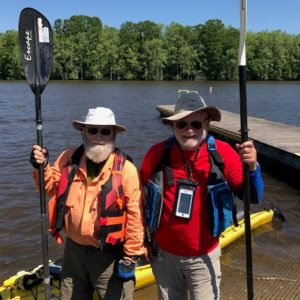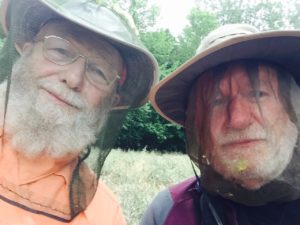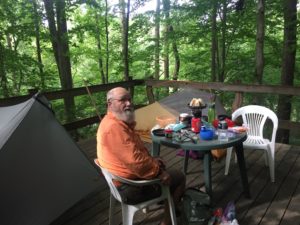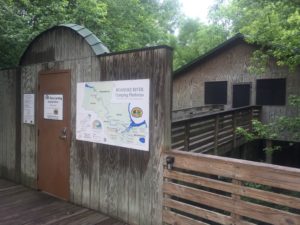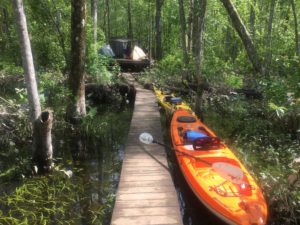Earlier this month I scratched an itch I’ve had for 21 years.
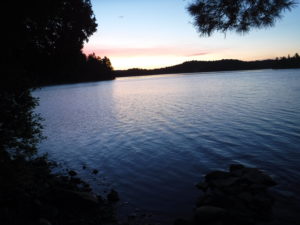
A friend of mine and I drove to Ontario, Canada, to Algonquin, a park almost three times the size of Rhode Island, put our gear in 15-foot canoes, and took off.
GRRRR, that’s my friend’s trail name, and I paddled down the Roanoke River two years ago, 113 miles from Weldon, N.C., to Plymouth. He’s pretty old, 72, but he’s solid.
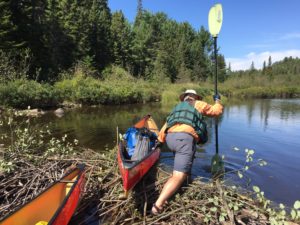
At Algonquin we crossed 18 lakes, padding, or dragging, our canoes up and down creeks, through marshes, or portaging, from lake to lake. We hauled our canoes over I don’t know how many beaver dams. We got rained on, hard sometimes. In the evening we pitched our tents close to the water and cooked over a camp fire. And for seven nights we heard the eerie call of loons and, sometimes, wolves howling in the distance.
It was a wonderful trip, everything I had hoped it would be.
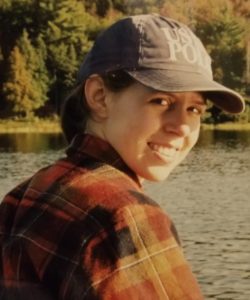
I’ve wanted to do that ever since I heard Emily Fox, one of Brother Pop’s grand daughters, tell about her Algonquin adventure in 1998, when she was a 20-year-old junior at Auburn University. She spent a couple of weeks there with a dozen or so classmates. Hearing her stories made me want to go but I just never had time –or made time — until earlier this month.
Algonquin is a big [1.9 million acres, 1,500 lakes] provincial park. Remote, too. One day GRRRR and I saw more moose [3] than people [2].
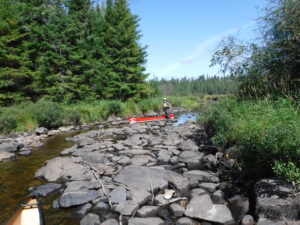
It is beautiful and, at times, challenging. My guess is that Algonquin [and Boundary Waters Canoe Area Wilderness in Minnesota] is for boaters what the John Muir Trail is for hikers.
We paddled almost 50 miles, not very far unless you consider that for miles, it seemed to us, we didn’t actually paddle, we dragged our canoes through shallow marshes and creeks to the next lake, not entirely unlike Humphrey Bogart in “The African Queen.” Yea, I know, the African Queen was a lot bigger than our canoes, but you get the idea. And, like Bogie, I got a leech on me, too.
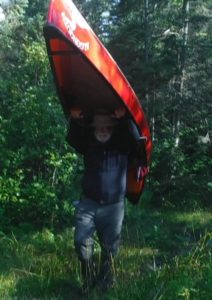
We portaged right often, five times one day, but never more than three-fourths of a mile. Carrying our canoes was no hill for a climber but carrying our canoes and packs at the same time was too much for us, especially the first few days, before we ate the steaks and potatoes, the chicken, the eggs and bacon. And the watermelon!
Watermelon?!
Yep. And oranges and tangerines, too. Those first few days, we were carrying a lot of weight in our backpacks, close to 40 pounds each, if not more. But we ate better than I’ve ever eaten on a trip into the wild. GRRRR did almost all of the cooking and twice he fried Irish Griddle Bread.
OK, here are some questions you might want to ask.
Q. Were you ever afraid?
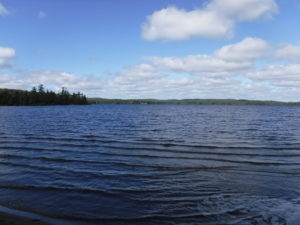
I don’t like that word. I prefer to say I was concerned several times when we were paddling across big lakes and the wind was blowing hard enough create white caps that rocked my canoe. Rocking and rolling on open water didn’t brother GRRRR, or didn’t seem to, but it bothered me a lot. I finally told him I wouldn’t do it any more. If the wind was blowing hard I was going to stay closer to shore.
Q. How was the weather?
So-so, I guess. We had two warm, sunny, blue sky days, three overcast mostly chilly days, and two rainy days. The eighth morning was promising but by then we were headed for the barn.

Q. Where did you go to the bathroom?
Well, in the woods, once. But all the camp sites had what GRRRR called a “thunder box.” They were located close to the camp sites so you couldn’t afford to be bashful.
Q. How did you find your way around?
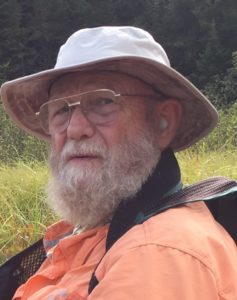
GRRRR had a GPS but, truth be told, sometimes he was as lost as I was. More than once I asked him, “Which way?” and he shrugged his shoulders in response. In the end, however, he always got us where we needed to go.
Q. Any ugly surprises?
Yes. I’ve backpacked quite a bit, more than 3,000 miles, and I have top-of-the-line equipment. But on this trip two key pieces of equipment failed me: my water filter, which both of us had planned to use, and my sleeping pad. Fortunately, GRRRR had water purification chemicals with him. My pad went flat early on the third night, a 32-degree night. I put on all the clothes I had, five layers from the waist down and six layers from the waist up, and I was still chilly. After that I slept on both of our backpacks, not comfortable but better than trying to sleep on cold-as-ice dirt.
Q. Accidents?
None, unless you want to count the time GRRRR turned his canoe over and fell out. Oh, I know. That was mean of me to mention that.
Q. Would you like to do it again?
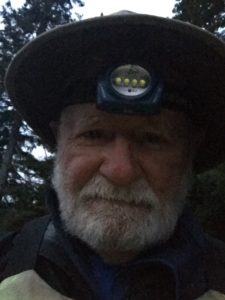
Yes, knowing what I know now, I’d have even more fun. But, no, I don’t have time. I’m 77. There are other things I want to do, like hike some more on the A.T. with my grandsons Christian, Cole, Curtis, and Eli. Go back to the Grand Canyon — any trail but the Nankoweap. And, maybe, hike at least part of North Carolina’s Mountains to the Sea Trail.
And I only have so much time left.
Coming Friday: The Answer To A Puzzling Question
